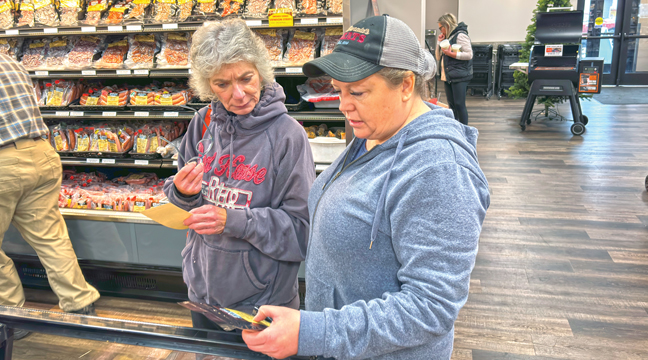An open house was held Oct. 29 for Clearview Elementary families interested in learning about the Clearview Forest restoration project.
The school is working with the Department of Natural Resources (DNR), which has proposed a 10-year plan to restore the 42-acre forest. Their recommendations include cleaning out dead and diseased trees, removing invasive tree species and restoring the grassy area of the property to natural prairieland.
The school’s goal is to also be able to use the forest for a variety of educational uses, which includes creating walking trails for students to use on nature outings.
Twenty community volunteers and District 742 employees have created a committee to take on the project.
The purpose of Saturday’s open house was to share information on the project, walk through and begin surveying the property, and begin tackling the removal of invasive species.
Nick Snably from the DNR was present to identify and talk to the group about some of the invasive species present in the forest, including Siberian elm, honeysuckles and buckthorn.
He told the group buckthorn retains its leaves late into the fall, making it easier to identify. There are two types, glossy buckthorn and common buckthorn. Both were brought over from Europe and were sold in nurseries until it was discovered how aggressively invasive they were.
Snably explained buckthorn grows thickly and is very competitive with native trees. It also shades out native ground layer plants, robbing them of the light they and native tree seedlings need to grow.
Small buckthorn plants can be pulled out of the ground for removal. Large plants need to be cut off at the soil surface and the cut stumps treated with herbicide to prevent them from re-sprouting.
Snably led the group into the north area of the forest, stopping along the way to identify and point out Siberian Elm, honeysuckle and buckthorn. Volunteers carried hand tools and an herbicide sprayer to begin removal and treatment.
The Clearview Forest volunteer restoration committee will work throughout the fall and into the winter as long as the weather permits to continue invasive species removal. The project is expected to take 10 years to complete.








